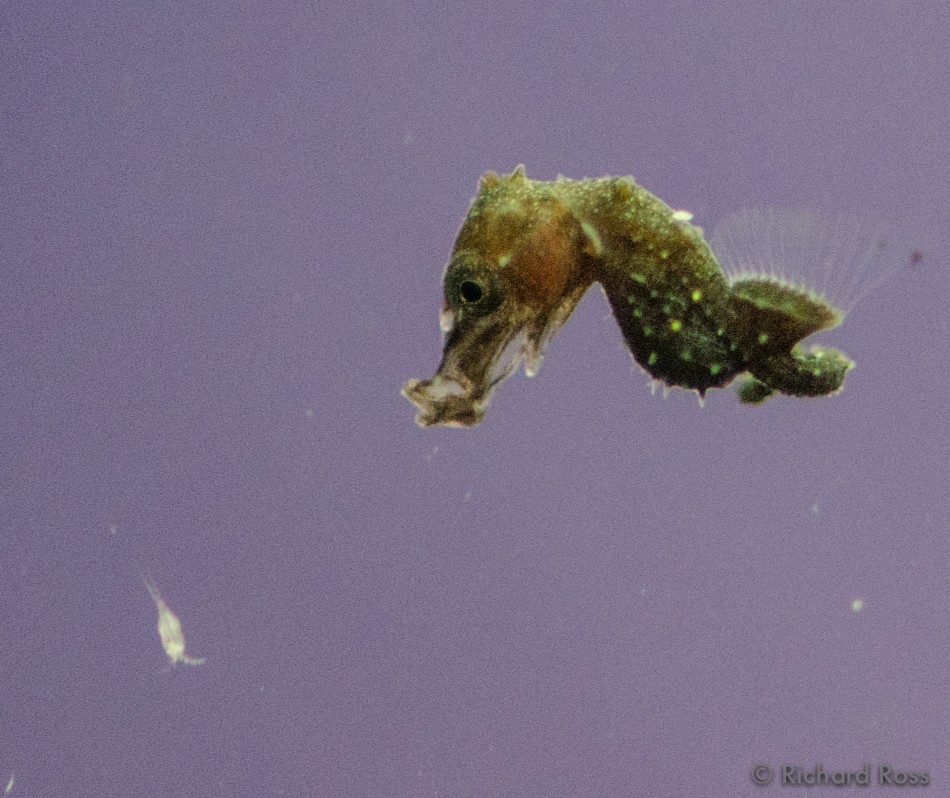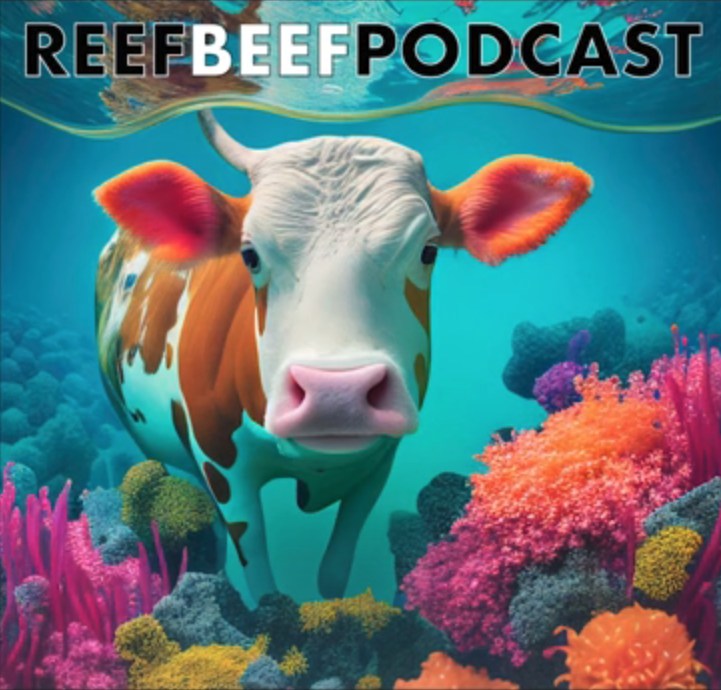From WIRED
BY NICK STOCKTON

For the past three weeks, Richard Ross has been spending his mornings next to a small tank in a back room at the Steinhart Aquarium in San Francisco. He leans in close. Not only is the room dark, but the fish inside this tank are masters of hiding in plain sight. They are Bargibant’s pygmy sea horses, and their orange, studded bodies twitch and sway just like the piece of coral they’ve wrapped their tiny, tiny tails around.
They are the first pair of pygmy sea horses to ever see the inside of an aquarium, and Ross is the first biologist to watch their daily pair bonding in a controlled environment.
As the lights slowly turn on, Ross can see that the two fish, each barely an inch long, are facing each other and twitching in unison. They rub snouts and butt heads. This ritual is part of their mating cycle, which culminates every 14 days with the birth of 60 to 70 babies. Immediately afterward, the pair detach from their pieces of coral, wrap their tails tightly, and the female deposits her eggs into the male’s belly sac, where he’ll fertilize and incubate the clutch.
Sea horse researchers call this the copulatory rise. ”The whole thing is very awkward,” says Matt Wandell, Ross’ colleague at the Steinhart Aquarium. On June 22nd, Ross and Wandell expect the pair to give birth for the third time since they arrived at the aquarium on May 20th.
The orange coral they attach to is called Murciella paraplectana, also known as sea fern. As adults, the Bargibant’s pygmy sea horses live their entire lives on Muricella, which is one of the reasons why they’ve never been raised in captivity. Unlike most other types of coral, Muricella can’t photosynthesize: They get all their energy by filter feeding pieces of plankton from the water. At the aquarium, they’ve solved this problem by constantly pumping the tank full of planktonic chum and circulating the water with a simulated current. The mixture—a smorgasbord of brine shrimp (a.k.a. sea monkeys), copepods, cyclop-eeze, shellfish diet, and live rotifers—includes food for the sea horses as well.
Keeping the sea ferns alive in captivity was such a dicey operation that aquarium director Bart Shepherd told Ross and Wandell that they had to keep one alive for three years before he’d let them try to keep pygmy sea horses.
When the ferns passed the three-year mark earlier this year, the two biologists made quick work holding their boss to his word. On May 18th, under cover of night, Wandell and a local dive guide slipped into the Verde Island passage, about 80 miles south of Manila. Ocean scientists have called this area the “center of the center” of marine biodiversity.
The guide led Wandell, whose combo of beard and red hair make him look like the sailor from the original GI Joe, to a sea fern about 80 feet down. While Wandell held out a piece of Muricella, the dive guide gently prodded the male and female sea horses on their tails with a thin, metal rod. They released their hold, and swam to the piece of fern in Wandell’s hand. He put the fern in a jar, and the team swam to the surface. Wandell clutched the precious cargo tightly the entire way back up.
Pygmy sea horses aren’t just small versions of larger sea horses; they have several key body adaptations that make them different. Instead of gills on either side of their head, pygmies have just a single gill on the back of their head. There are eight known species of pygmy sea horse, seven of which have been named. Bargibant’s pygmy seahorses (like the pair at the aquarium) were the first discovered. They have the widest distribution, are the second largest in size and are among the pickiest in terms of habitat.
Pygmy sea horses are closely monitored, and the Steinhart team had to get permits not only from the Convention on International Trade in Endangered Species (CITES), but the Philippine government and the local mayor before they could ship their cargo home.
Down the hall from the narrow room where Ross watches the adults each morning is the Aquatic Holding Room. The room is full of tall cylinders full of jellyfish, coral in long, shallow reservoirs, and plenty of bubbling, fish-filled tanks. The two clutches of babies tumble like sea-horse-shaped confetti in side-by-side, round tanks. There’s a piece of sea fern hanging at the top of the tank on the right, where the older clutch lives.
In the next few weeks, these babies will mature, and the biologists will start to plan an exhibit. No date has been set, because the sea horses are still so new. But, some will probably get sent to other aquariums that Ross says are eager to start breeding programs of their own. Others will be kept in a tiny, magnified case at the Steinhart aquarium so that visitors can, for the first time, see these tiny aquatic wonders.
